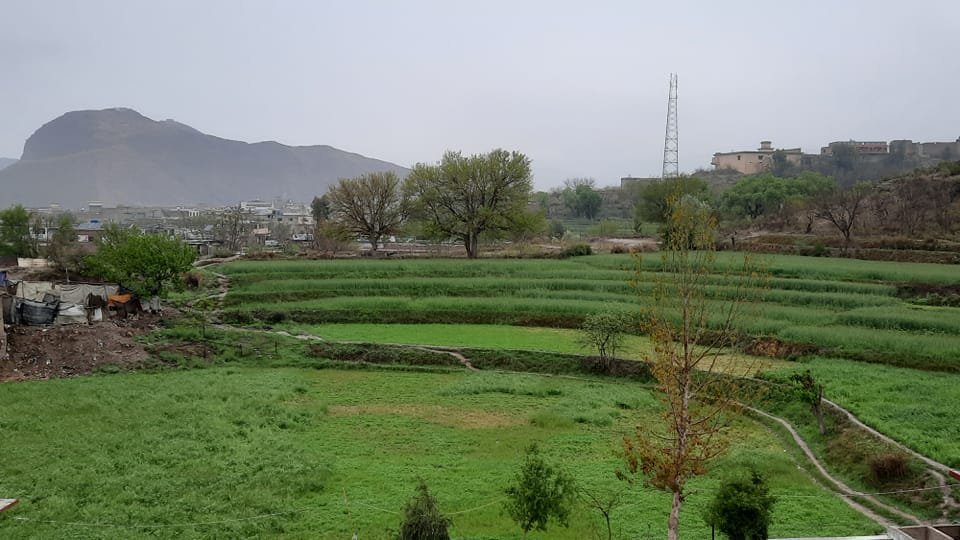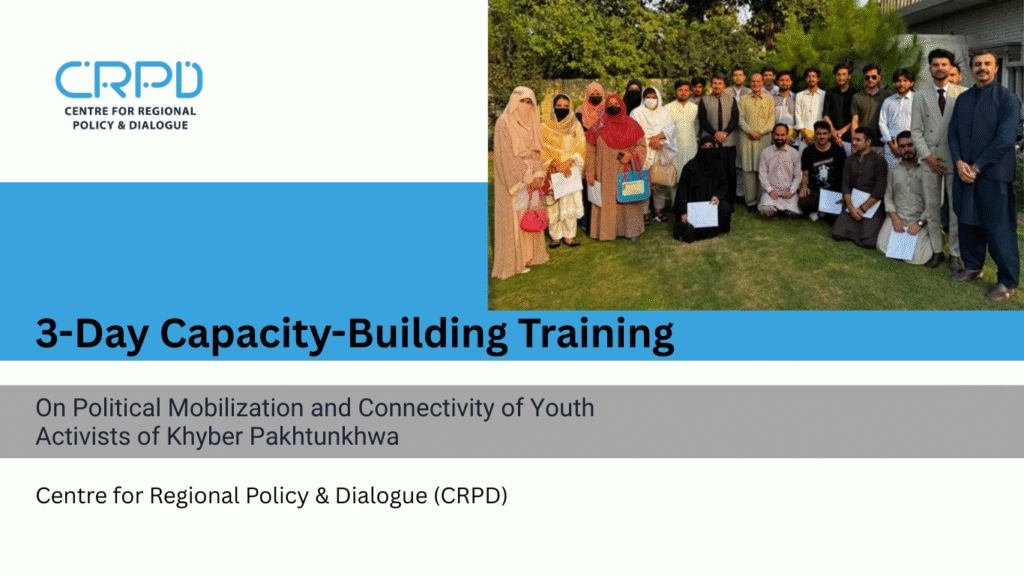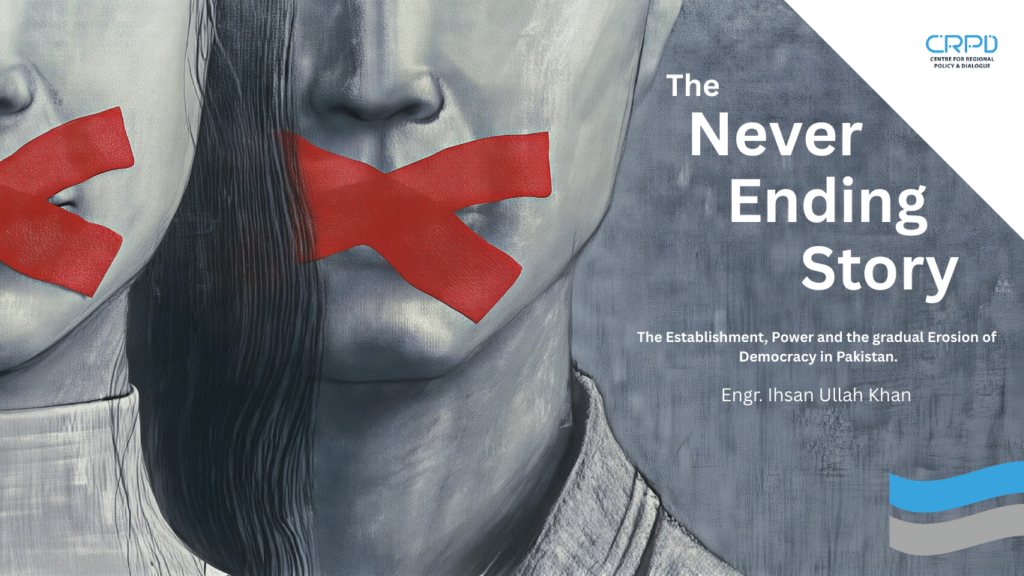By Waseem Abbas
The Haqqani Network based in Afghanistan and parts of Pakistan is one the most resourceful and sophisticated private armed militias. The co-founder of the Haqqani network was the late Jalaludin Haqqani. The Network has found sanctuaries in Pakistan’s erstwhile tribal areas near the Durand Line, specifically in North Waziristan. Purportedly supported by some elements of the Pakistan security establishment, the Network operates across the Durand Line in southeastern Afghanistan. Due to increased coalition pressure in both Pakistan (through drone strikes) and Afghanistan (via special forces), the Haqqanis have sought new sanctuaries and unusual infiltration routes. They have increasingly focused on Kurram District of Khyber Pakhtunkhwa as a potential sanctuary. Kurram holds strategic importance as it provides access to three provinces of Afghanistan and is the shortest route to Kabul from Pakistan.
In February 2011, a peace agreement was signed between the Shia and Sunni communities in Kurram that brought nearly four years of internecine entanglement to an end. As part of the agreement, Sunni and Shia groups agreed to reopen the main road that connects Peshawar with Kurram which had been blocked since April 2007. Upper Kurram is shaped like “parrot beak” that protrudes deep into eastern Afghanistan. Upper Kurram is the easy way to access Kabul, the capital of Afghanistan, as compared to all other crossings from Pakistan.
This seems logistically costly for the Haqqani Network to be active across the borders while handling their operations comfortably. The Haqqani Network was previously based in North Waziristan but due to drone strikes, it came under pressure. They then thought it prudent to change their routes and move toward Kurram District. The additional advantage for the Haqqani Network was the Shia-Sunni Faultline which they successfully exploited to their leverage. During skirmishes, the other militant groups such as Al Qaeda, TTP, etc., also got actively engaged with apparently some assistance from the Pakistani Security establishment.
A mountain of literature is now available on the emergence and expansion of the Haqqani network as a private armed militia backed by both the US and Pakistani security establishments during the Soviet-US war in Afghanistan in 1980s.
Brief History of Kurram
The history of Kurram dates back to the fifteenth century when the Turi community established a summer headquarters in Ariob (currently located in Paktia province). By 1700 AD Turi tribes consolidated their control over the upper Kurram after dominating the Bangash tribes. Resultantly, most of the Bangash tribes embraced Shia tenets. Mostly, Bangash of upper and central Kurram embraced Shia tenets while Bangash in lower Kurram continued their adherence to Sunni sect.
As a perspective, the first communal violence occurred in the 1930s during the holy month of Muharram and Nowruz, the Persian New year. Later, when the Khomeini Revolution was brough about in Iran in 1979, the sectarian divide in Kurram exacerbated perhaps because of the internal sectarian zeal and the intervention by the Kingdom of Saudi Arabia (KSA). The mutual blame game between the two sects of Saudi and Iranian support added fuel to the fire. This created a favourable strategic environment for the western alliance and the security establishment of Pakistan to establish Kurram as one of the launching pads for Soviet-US war in Afghanistan in the 1980s.
From the insurgency of ‘Mujahideen’ in the 1980 in Afghanistan to Operation Enduring Freedom during the 1980s, Kurram agency served as strategic depth for the militant groups as well as for the national and international security agencies. The second Shia-Sunni conflict occurred in 1986 when Shia Tuuri community started resisting the Sunni ‘Mujahideen’ fighters from crossing over to Afghanistan. In response, the security establishment headed by Gen Zia Ul Haq at that time facilitated the ‘Mujahideen’ and other Sunni tribes to purge Shia Tuuris in the upper Kurram city of Parachinar. In the meanwhile, Shia Leader Arif Hussain Alhusaaini, was assassinated which inflamed the situation in Kurram. Commander Abdul Sayyaf in Jaji camp in Pakitia was a well-known facilitator of all the militant groups during this time. Over the course of the next year, in 1987, Osama Bin laden built another war-camp for Arab fighters against soviets.
The headquarters of Kurram, Parachinar, became the hub of inter Pakistan-Afghanistan movement for militant armed militias during this era. They received weapons and other supplies from Peshawar delivered through heavy vehicles. The armed private militia moved back and forth on the Durand Line. The line of communication between them was known as the ” Logar Route”. The fighters of the private militias used facilities of the Tora Bora camp, which was built by commanders of Maulvi Younas Khalis group. Fighters used routes and roads constructed by Bin Laden from Jaji camp to Kurram.
After the collapse of the Taliban regime in 2001 in Afghanistan, Al-Qaeda and the affiliated fighters sheltering in and around Jalalabad, Nangarhar, began mass movement to Bin Laden’s complex in the Tora Bora Mountains. Tora Bora was under the control of Younus Khalis, who sheltered Bin Laden and introduced him to Mullah Omar. Younas Khalis was also known to be a father figure to Bin Laden. It is commonly perceived that in the mid-December 2001, majority of these fighters entered upper Kurram and took shelter with sympathetic Sunni tribesmen. This was purportedly the same route used by Osama Bin Laden but he did not expect resistance from the Shia Community against him and his fighters. Approximately, 200 Al Qaeda affiliated Arabs were handed over to Pakistani government authorities by Shia community elders in Kurram. The Shia community, in this way, posed severe resistance to Al-Qaeda and other Sunni militant fighters blocking Bin Laden and his fighters.
Escalation of Sectarian Violence in Kurram
Relative calm was observed between 2001 to 2007 in the Kurram valley despite the fact that Al Qaeda was located in the central Kurram and in other mountainous regions of Kurram. The Pakistani Taliban had started their terror activities in 2004 inside the territories of Pakistan which caused activation of the other militant organizations, including the Punjab-based Sipah-e-Sahaba Pakistan (SSP), Lashkare-Jhangvi (LeJ), and Jaish-e-Muhammad (JeM). They started shifting to the erstwhile FATA after the Musharraf government banned them in 2002. Another organization that reportedly shifted its operations to the erstwhile FATA was the Kashmir-based Lashkar-e-Taiba (LeT), perhaps due to a severe earthquake in 2005 in Kashmir.
Petty intermittent clashes would be observed before 2007 which would be easily resolved by the elders of the area and the local administration but on April 6, 2007, a procession of Shias was attacked in Kurram headquarters of Parachinar, a city of 70,000 people, igniting sectarian clashes across the whole of Kurram district.
During these clashes the Sunnis claimed that Shias were backed by Iranians in the form of Hizbul Hussain and Mahdi Militia while the Shias claimed that Sunnis were supported by the TTP, Al Qaeda, SSP, and Punjabi militias from JeM and LeJ, as well as Haqqani affiliated fighters from neighboring North Waziristan who sought to expand their access to Afghanistan.
The main artery, the Thall-Parachinar Road, of Kurram was blocked during the clashes. This blockade inflicted heavy losses on the Shia community of Upper Kurram. The Haqqani network took advantage of this road-blockade, brutally killed and tortured the Shia community members and took control of the route. This loss was later substantiated during negotiations between the Shia community and the Haqqani Network in 2009 and 2010.
The clashes eventually subsided by April 15, 2007, following a ceasefire negotiated by the warring tribes and a military imposed curfew throughout the major towns. Another phase war was declared in November 2007. It was a bloodier than the clashes before. Over a hundred people were killed in the first two days, including eleven Pakistan Army soldiers in Parachinar. Taliban and other militant groups were engaged actively. Hundreds of families were displaced to Afghanistan’s provinces of Paktia and Khost. According to the UNHCR, over 900 families (over 6,000 people) fled to Afghanistan to escape the violence. The Shia community of Upper Kurram suffered shortage of basic amenities. They used alternative route for travel which goes to Paktia province of Afghanistan, and then through the city of Jalalabad in Nangarhar province to reach Peshawar.
Shias were not safe there either but they had to take the risk because there was no other way through which the people of Upper Kurram could be connected to Peshawar. In September 2008, following eight weeks of heavy straight fighting, a tribal jirga, consisting of Sunni and Shia elders, finally agreed to a ceasefire signed by both sides on October 17, 2008 in Murree, Pakistan. The accord stipulated that dozens of people kidnapped by both sides would be released immediately, the Thall-Parachinar Road would be reopened, and the internally displaced people (IDPs) would be allowed to start returning their homes.
This agreement, unfortunately, did not last longer as clashes resurged in June and July 2009 that left over one hundred people dead. Taliban led by Hakimullah Mehsud was said to be behind all the violence as he was known for his anti-Shias sentiments. He was well known as he was appointed as commander of the TTP Kurram by the High Command of the TTP. The central role in clashes and riots was now assumed by TTP.
When the Taliban was pushed out of Waziristan in October 2009, they moved toward Kurram and Orakzai. Later, the Pakistan army launched operations against them in Kurram and Orakzai. According to the UN report in April 2010, the number of people who were displaced due to military operations in Kurram and Orakzai since November 2009 had reached 21,000.
The Thall-Parachinar Road was still closed but later in July 2010 Pakistan military declared that their operation was almost completed and that the main road was now safe for travelling. But people were still concerned and, hence, avoided travel or then travelled in escort by Pakistani troops. The prolonged road closure caused severe shortages of food and medicine and led to high inflation in wheat flour prices, a local staple. To ease the burden, a local aircraft service began offering limited flights from Parachinar to Peshawar but these flights had little capacity and were too expensive for most of residents.
In September 2010, reports indicated that the Haqqani Network was engaged in peace talks between the Shia and the Sunni tribes of Kurram, despite their history of fighting against the Shias since 2008. The Shias opposed the Haqqanis’ attempts to use Kurram as a route into Afghanistan due to their presence in North Waziristan. Despite resistance, the Haqqanis continued to seek access through the region. Some reports also claimed that Shias later agreed with the Haqqani Network for access to Afghanistan.
North Waziristan and the search for new sanctuary
The training centers and cross-border activities of the Haqqani network were managed from North Waziristan. The Haqqanis are said to be afforded protection in this area by a local tribal leader and militia commander, Hafiz Gul Bahadur, who controls the territory between Miram Shah and the Afghanistan border with Khost. Drone strikes against them during 2004 to 2008 disturbed the equation. The drone strikes blocked the Al-Qaeda and the Haqqani Network decreasing their cross-border movement.
Both the militias then enhanced their infiltration across the Durand Line and carried out incessant attacks in Kabul, Afghanistan so much so that a foreign minister of Norway was assassinated in Serena Hotel Kabul. Paktia and Khost were continuously under attack by these militant organizations. The dangerous nature of the Haqqani Network was reflected in its involvement in the December 30, 2009 attack on CIA personnel in Khost.
A Jordanian jihadist, posing as an ally, detonated an explosive vest, killing four CIA officers during a meeting about Ayman al-Zawahiri’s whereabouts. Though the Haqqani Network didn’t publicly claim responsibility, Siraj Haqqani, referred to the attack and the bomber by name in an interview. In response, U.S. drone strikes in North Waziristan focused exclusively Haqqani-controlled areas with seven strikes targeting Mir Ali, Miram Shah, and Datta Khel in the following two weeks.
Drone strikes in various locations of North Waziristan slowed down the infiltration across the borders in 2008 and 2009 and the fighters of Haqqani Network were no longer able to enter or exit Loy Paktia in large groups and many were either captured or destroyed. Moreover, they moved toward the Kurram for the new sanctuary due to increased activity in both Pakistan and Afghanistan.
On February 5, 2011, the Shia and the Sunni communities in Parachinar, Kurram, ended a four-year feud that had resulted in over 2,000 deaths and 3,500 injuries. A 220-member tribal jirga, including tribesmen and National Assembly members, security establishment and commanders of the Haqqani Network verified the peace accord.
Though this deal was approved and accepted by both the Shia and the Sunni communities, even then an attack on the Shia vehicle in Lower Kurram near Baggan on March 25, 2011, was reported in which some thirteen people lost their lives and some forty people were reported to be kidnapped. Both the Shia and the Sunni elders strongly demanded from the govt to take immediate actions against those who violated the Murree Agreement. Thall-Parachinar Road is still unsafe and most probably some quarters whether from the local mafias or the establishment still wish to perpetuate the conflict for their vested interests.
To conclude, the Haqqani mediated peace in Kurram appears beneficial to all parties involved, whether it was for their own purpose or for the sake of the Pakistani state, as four years of bloody sectarian violence ended in Kurram. This was short-term peace building was beneficial for the people but created huge gulf between the Shia and Sunni sects. The Haqqani Network successfully achieved its objectives as its infiltrating point whenever it suits it. Kurram is now safe haven for national and international terrorist groups.
The current arrangement mediated by the Haqqani Network provides the Haqqanis with additional infiltration routes into Afghanistan, particularly into Jalalabad, Gardez, and Kabul. In the short term, the peace will allow freedom of movement in Kurram with reduced violence, though occasional skirmishes and interference from spoiler groups may continue. However, allowing insurgents and transnational terrorists to operate in the region could destabilize Kurram even more over time, especially with increased militant activity and drone strikes. If Sunni militants gain a strong foothold, they could threaten the large Shia communities in upper Kurram. Additionally, groups like the TTP might use Kurram, along with other southern districts, to expand recruitment, establish new safe havens, and intensify efforts create troubles for the Pakistani state. The short-term peace could thus lead to long term challenges in both Afghanistan and Pakistan.
References
3 Khan p.116; Mariam Abou Zahab, “Sectarianism in Pakistan’s Kurram Tribal Agency,” Terrorism Monitor, VII (6) March 19, 2009
Afghanistan: The Bear Trap: Mohammad Yousaf – Amazon
TORA BORA REVISITED: HOW WE FAILED TO GET BIN LADEN …
THE HAqqANI NETWORk IN kURRAM – Institute for the Study of War Sectarianism in Pakistan’s Kurram Tribal Agency
Pakistan: The Sectarian Expanse – South Asia Terrorism Portal
Shia deal gives militants new Afghan access – Pakistan – DAWN.COM https://www.satp.org/terrorist-activity/pakistan-fata-fata-kurram%20agency-Apr-2007 https://www.dawn.com/news/1346711
The author is a social and political activist from District Kurram and a student of English Literature and Linguistics at NUML, Islamabad





